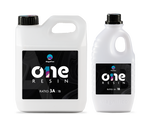Epoxy resin curing is a chemical process that transforms liquid resin into a solid, durable material. This process is highly sensitive to environmental factors, particularly temperature. Whether you’re working on a small DIY project or a large industrial application, understanding how temperature affects epoxy resin curing can help you achieve the best results. In this blog, we’ll explore the impact of temperature on curing, along with tips for optimizing your workspace conditions.
The Role of Temperature in Epoxy Resin Curing
Curing is the chemical reaction between resin and hardener that leads to hardening. Temperature plays a crucial role in regulating the speed and effectiveness of this reaction.
-
Ideal temperature range: Most epoxy resins are designed to cure best between 70°F to 85°F (21°C to 29°C). Staying within this range ensures that the curing process occurs at the right pace and yields optimal results.
-
Heat accelerates curing: Higher temperatures can speed up the curing process, but this can also lead to issues like overheating or uneven curing.
-
Cold slows curing: Lower temperatures can slow down the reaction, causing the resin to remain sticky or soft for longer periods. In extreme cases, cold can prevent curing altogether.
High Temperature Effects on Epoxy Resin Curing
If temperatures rise above the recommended range, the curing process accelerates. While this might sound like a benefit, it can actually introduce several problems:
-
Overheating: Too much heat can cause the resin to exotherm, meaning it generates excessive internal heat. This can lead to bubbles, warping, or even cracking.
-
Shortened working time: Higher temperatures reduce the pot life, the period during which the resin remains workable. You’ll have less time to apply or shape the resin before it hardens.
-
Surface imperfections: Fast curing at high temperatures can result in surface defects like dimpling or an uneven finish.
Low Temperature Effects on Epoxy Resin Curing
Colder temperatures slow down the chemical reaction, which can introduce a different set of challenges:
-
Prolonged curing time: At lower temperatures, the resin will take much longer to cure, sometimes remaining sticky or tacky for days. This can delay your project timeline.
-
Incomplete curing: If the temperature drops too low, the resin may not fully cure, resulting in a softer, weaker surface. This can compromise the strength and durability of your finished product.
-
Cloudy or hazy finish: Cold temperatures can sometimes cause the resin to take on a cloudy appearance, reducing the clarity and shine of the surface.
How to Control Temperature for Epoxy Resin Curing
To ensure optimal curing, it’s important to maintain a stable, controlled temperature during your project. Here are some practical tips:
-
Monitor room temperature: Use a thermostat to keep the room within the recommended range of 70°F to 85°F. Avoid working in environments where temperature fluctuations are common.
-
Pre-warm materials: In colder climates, it’s a good idea to warm your resin and hardener bottles in a water bath before mixing. This can help ensure a smoother curing process.
-
Control workspace humidity: Humidity can also affect curing, particularly when combined with temperature variations. Aim for a workspace with low to moderate humidity to avoid issues like blushing or clouding.
-
Use heat lamps or space heaters: In cold environments, heat lamps or small space heaters can help maintain the ideal temperature range during curing. Just be careful not to overheat the resin.












































